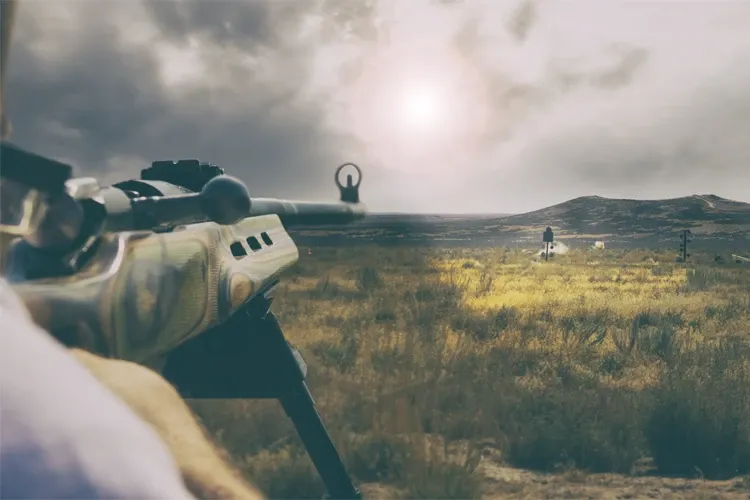Here we go again.
Another shooting perpetrated by a criminal, and another round of blaming law-abiding citizens and attempting to revise history when it comes to the 2nd Amendment.
If you follow 2nd Amendment issues, you have likely heard gun control advocates and TV talking heads claim that the 2nd Amendment only protects guns for those in the “militia” (which they attempt to define as the military only), and NOT for individual citizens.
In an article for MarketWatch, Brett Arends asserts that because we now have a professional army, “you could argue that makes the Second Amendment null and void.”
He primarily builds his case on the back of Alexander Hamilton’s Federalist Paper No. 29.
According to Arends, Hamilton meant that the militia was something akin to today’s National Guard. “It should be a properly constituted, ordered and drilled (“well-regulated”) military force, organized state by state,” Arends paraphrases.
“Although it was organized state by state, it needed to be under the ultimate control of the national government. The ‘well-regulated militia’ was under the command of the president. It was ‘the military arm’ of the government,” Arends continues.
Like a prosecuting attorney, Arends has called founding father Alexander Hamilton to the stand. He has asked Hamilton a very narrow set of questions designed to get the answers he would like. And the picture he has painted is even somewhat compelling to an uninformed reader.
But now it's our turn to cross examine him. Does Hamilton really say what Arends makes him out to say? Has Arends told the whole truth?
The answer is “no” — but it’s not just “no”:
Arends has gotten Hamilton exactly backwards.
Does Hamilton really say what Arends makes him out to say? Has Arends told the whole truth? The answer is “no” — but it’s not just “no”: Arends has gotten Hamilton exactly backwards.
He appeals to Hamilton’s use of the phrase “select corps.” Quoting Hamilton, Arends says, “Each state militia should be a ‘select corps,’ ‘well-trained’ and able to perform all the ‘operations of an army.’” He interprets Hamilton to say that this “select corps” is the militia. So, in Arends’ mind, when the 2nd Amendment mentions the “well-regulated militia” and says “the right of the citizens to keep and bear arms shall not be infringed” it is only referring to those in this “select corps.” With unearned sass, Arends ends his essay saying that people who want to own so-called assault rifles should be willing to join this “select corps,” too.
But Arends flat out misunderstands Hamilton. What is Hamilton’s “select corps” selected out of? Well, it's selected out of the “militia.” The reason that Hamilton gives for creating this “select corps” is that "the project of disciplining all the militia of the United States is as futile as it would be injurious.”
The reason Hamilton thinks it would be futile to discipline “all the militia” is because it’s a big group — because it’s “the great body of the yeomanry, and of the other classes of the citizens” as Hamilton says just two sentences later. The militia is the able-bodied citizenry. Some of that militia is well-regulated in a group Hamilton calls the “select corps.”
This has been reaffirmed in federal law. Section 246 of Title X of the US Code clearly defines the militia:
The militia of the United States consists of all able-bodied males at least 17 years of age and, except as provided in section 313 of title 32, under 45 years of age who are, or who have made a declaration of intention to become, citizens of the United States and of female citizens of the United States who are members of the National Guard.
Then, it further divides the militia into two distinct parts:
(1) the organized militia, which consists of the National Guard and the Naval Militia; and (2) the unorganized militia, which consists of the members of the militia who are not members of the National Guard or the Naval Militia.
Both groups are part of the one militia.
According to Hamilton, both groups are indispensable. The “select corps” will “lessen the call for military establishments” because it gives the federal government a military force to call on if needed. At the same time, Hamilton says, “that army can never be formidable to the liberties of the people while there is a large body of citizens, little, if at all, inferior to them in discipline and the use of arms, who stand ready to defend their own rights and those of their fellow-citizens.”
But the Founders recognized the well-regulated militia could be its own threat to American freedom. And the Founders provided a solution for that, too:
You, the 2nd Amendment, and your guns.
So here’s Hamilton’s argument in a nutshell:
We need an organized fighting force that the federal government can call upon so we can effectively fight our enemies. But that can’t be the entire population because it’s impractical. And we don't want a standing army that can be used against us by a tyrannical federal government. So we will have federally regulated groups of professional soldiers that are independently operated by each of the states. The federal government can call upon these groups if needed. And we will also have an armed citizenry that can keep those professional soldiers in check.
This misunderstanding of Hamilton simply comes down to a reading comprehension problem – likely induced by a presupposed commitment to gun control.
With Hamilton’s actual argument in mind (and not Arend’s revisionist version), we can read the 2nd Amendment and see it’s genius:
A well regulated Militia, being necessary to the security of a free State, the right of the people to keep and bear Arms, shall not be infringed.
The Founders realized that a well-regulated militia was necessary to American freedom — they needed a fighting force to push back an invasion.
But they recognized the well-regulated militia could be its own threat to American freedom. And the Founders provided a solution for that, too:
You, the 2nd Amendment, and your guns.




